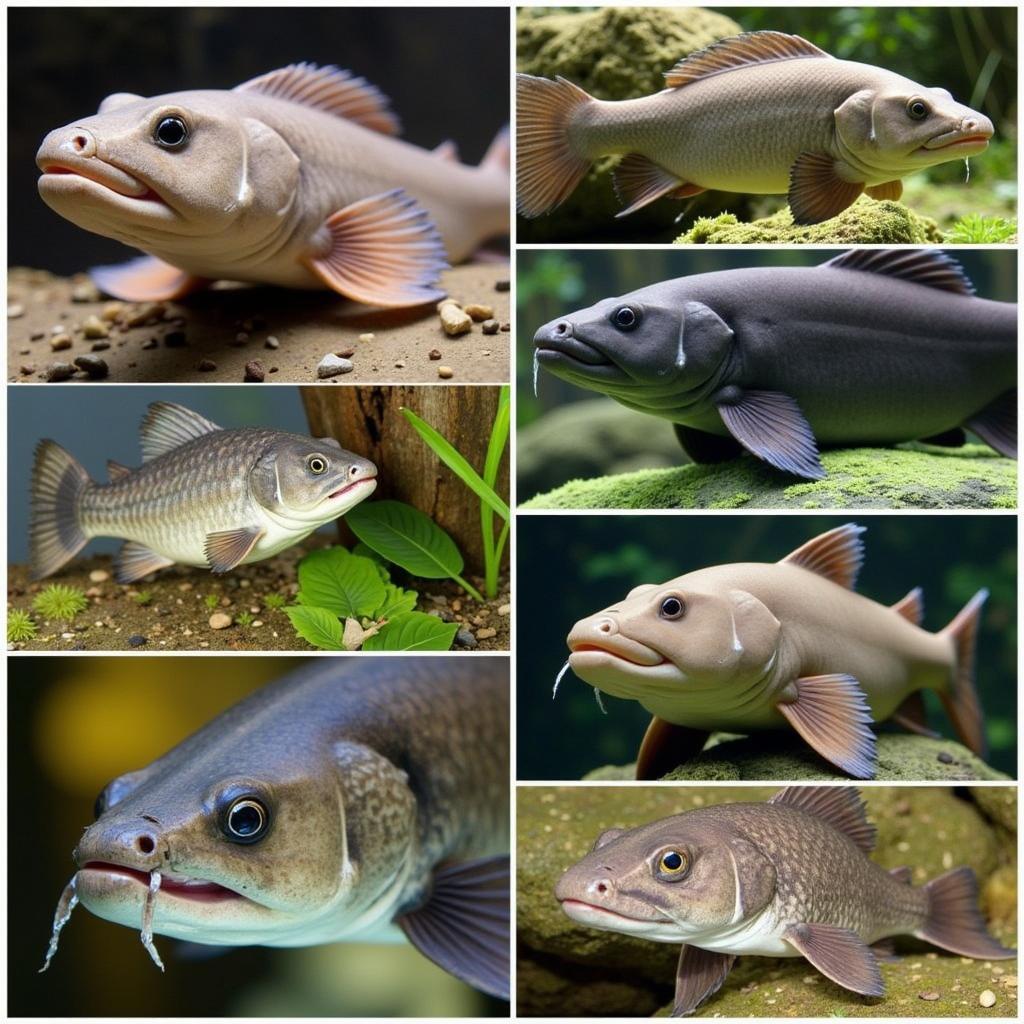African Art vs Surrealism: Exploring the Unexpected Connections
African art and surrealism, two seemingly disparate artistic movements, share a surprising number of commonalities. While separated by continents and centuries, both embrace the power of the subconscious mind, the exploration of dreams and visions, and the subversion of traditional perspectives. This essay will delve into the fascinating parallels between these two artistic expressions, showcasing how their seemingly divergent paths converge in the realm of the extraordinary.
The Unconscious Mind: A Shared Source of Inspiration
Both African art and surrealism draw inspiration from the depths of the unconscious mind. For centuries, African artists have incorporated dreams, myths, and spiritual beliefs into their creations. Masquerade masks, for instance, are not merely decorative objects; they are powerful representations of ancestral spirits and deities, designed to evoke emotions and inspire awe.
“African art is not about depicting reality,” says Professor Aisha Musa, a renowned art historian specializing in African aesthetics. “It’s about tapping into a deeper reality, the realm of the unseen, the mystical, and the spiritual.”
Similarly, surrealism, emerging in the early 20th century, sought to liberate the mind from the constraints of reason and logic. Surrealist artists embraced the world of dreams, hallucinations, and subconscious impulses as a source of inspiration. Their works, often featuring dreamlike imagery, distorted perspectives, and jarring juxtapositions, reflected the exploration of the mind’s inner landscapes.
The Power of Symbolism and Metaphor
Both African art and surrealism rely heavily on symbolism and metaphor to convey meaning. In African art, symbols are woven into the fabric of everyday life, often representing ancestral lineages, clan identities, and cultural values. For example, the “Adinkra” symbols, found in Ghanaian art, are intricate geometric patterns that convey profound philosophical messages.
“African art is a language of symbols,” explains Adewale Olatunji, a leading expert on African art and culture. “Each symbol carries a specific meaning, and together they form a rich tapestry of cultural knowledge and wisdom.”
Surrealist artists, similarly, utilized symbols and metaphors to challenge conventional interpretations of reality. They often employed objects and imagery in unexpected contexts to create a sense of disorientation and evoke psychological insights.
Subverting Traditional Perspectives
Both African art and surrealism reject conventional perspectives and challenge established norms. African art, often seen as a powerful form of social commentary, has been used to critique power structures, celebrate cultural identity, and highlight social injustices.
“African art has always been a tool for social change,” states Professor Musa. “It’s a voice for the voiceless, a means of expressing dissent and challenging the status quo.”
Similarly, surrealism emerged as a reaction against the rationalism and materialism of the early 20th century. Surrealist artists rejected the constraints of realism and sought to explore the irrational, the illogical, and the subconscious. Their works, often infused with a sense of rebellion and anti-establishment sentiment, served to disrupt conventional ways of seeing and thinking.
Conclusion: A Shared Legacy of Imagination
The connections between African art and surrealism underscore the power of imagination, the importance of the unconscious mind, and the potential of art to challenge the status quo. Both movements, despite their historical and geographical differences, share a common thread: the exploration of the uncharted territories of the human mind.
By embracing dreams, myths, and the subconscious, African art and surrealism have produced a legacy of innovative, expressive, and thought-provoking works that continue to inspire and provoke audiences around the world. Their shared commitment to exploring the depths of human experience speaks volumes about the interconnectedness of artistic expression and the enduring power of the human imagination.
FAQ
Q: What are some specific examples of African art that reflect surrealist elements?
A: Many examples exist, such as the masks and sculptures of the Dogon people of Mali, the intricate wood carvings of the Yoruba people of Nigeria, and the ceremonial objects of the Baule people of Ivory Coast, all of which feature symbolic imagery, distorted perspectives, and dreamlike qualities.
Q: How has surrealism been influenced by African art?
A: Surrealist artists, particularly in the 1920s and 1930s, were deeply influenced by the imagery and symbolism found in African art. They were particularly drawn to the masks, sculptures, and textiles of the Congo and the Ivory Coast, which they saw as expressions of a primal, instinctive energy.
Q: Are there any contemporary artists who blend African art with surrealism?
A: Yes, many contemporary artists, such as Romuald Hazoumè from Benin and Wangechi Mutu from Kenya, incorporate elements of surrealism and African art into their work, creating thought-provoking and aesthetically stunning pieces that explore themes of identity, culture, and the human condition.
Q: What are some ways to learn more about the relationship between African art and surrealism?
A: You can explore online resources, visit museums and art galleries, and attend lectures and workshops on the subject. There are also a number of books and articles that delve into the intersection of these two art forms.
Q: Is African art considered “primitive” or “tribal”?
A: No. These terms are outdated and insensitive. African art is sophisticated, complex, and culturally rich. It reflects a deep understanding of symbolism, spirituality, and the human condition.
Q: How can I support African artists and art movements?
A: You can purchase African art, attend exhibitions and events featuring African artists, and support organizations that promote African art and culture. You can also educate yourself about the history, significance, and diversity of African art.


